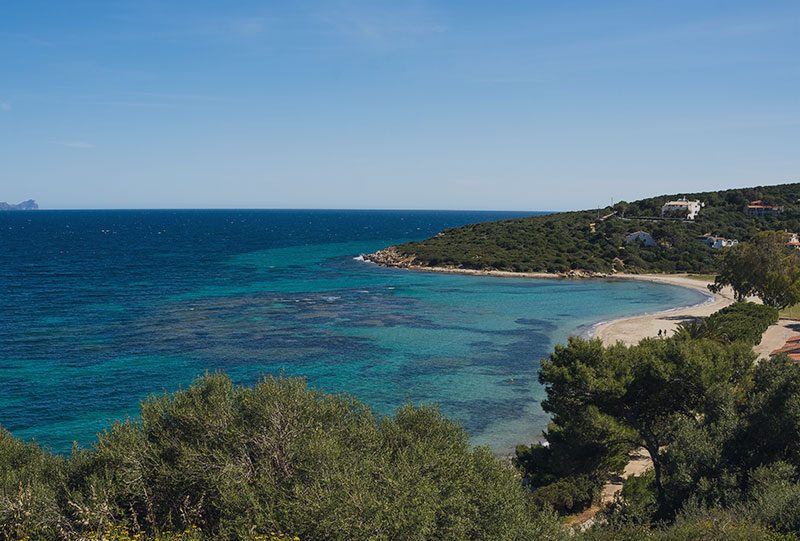SURROUNDINGS
Sant’Antioco, an island within the island
The Le Pavoncelle – Sant’Antioco holiday complex is located in the southernmost area of the Sant’Antioco island, near Capo Sperone: blue seas and expanses of pink peonies. Sant’Antioco is the most famous and populated island of the Sulcis archipelago, on the south-eastern side of Sardinia. It is connected to the mainland by an artificial isthmus built perhaps in Punic times and later completed by the Romans.
SEA
The island’s coasts have a great seabed for scuba diving. Near Le Pavoncelle there are the Maladroxia beach, with extremely fine sand and thermal water known since Roman times; the Coacuaddus beach, wide and sandy, framed by typically Mediterranean vegetation; the Turri beach, made by three suggestive coves. Off Capo Sperone there are the little islands of the Vacca and the Toro (Cow and Bull), protected areas reachable by boat.
FOOD
The gastronomic offer is varied and capable of pleasing any palate, thanks to the vast richness of fresh and genuine ingredients, coming from both the sea and the land:
grilled sheep and pork meats, sheep and goat cheeses, fish, mollusks and crustaceans. Worth mentioning are the locally produced tuna and mullet botargo, the tuna mosciame, the traditional durum wheat bread and the excellent wine choices, especially the Carignano del Sulcis.
TRADITIONS
Both the island and the city take their name from the martyr Sant’Antioco (Saint Antiochus), to whom is dedicated the basilica by the same name, already known in 1089. The connection with the Saint gets renovated fifteen days after Easter with the most ancient Sardinian religious festivity, unaltered since 1615. Nowadays, the Saturday preceding the “sa Festa manna” (the big festivity) there’s the “is coccois” parade (cerimonial bread), and on August 1st the Saint is celebrated with a parade in traditional clothing.
HISTORY AND CULTURE
Prenuragic, Carthaginian and Roman populations have left traces of their presence in various archeological sites all across Sant’Antioco. The F. Barreca museum preserves a rich collection of small bronze statues and findings from all over the island. The MuMa museum summarizes maritime history and traditions, while the ethnographic museum, Su Magasinu de su binu (The wine storage), testifies the agro-pastoral ones. The Bisso museum is dedicated to the processing and weaving of sea silk.

